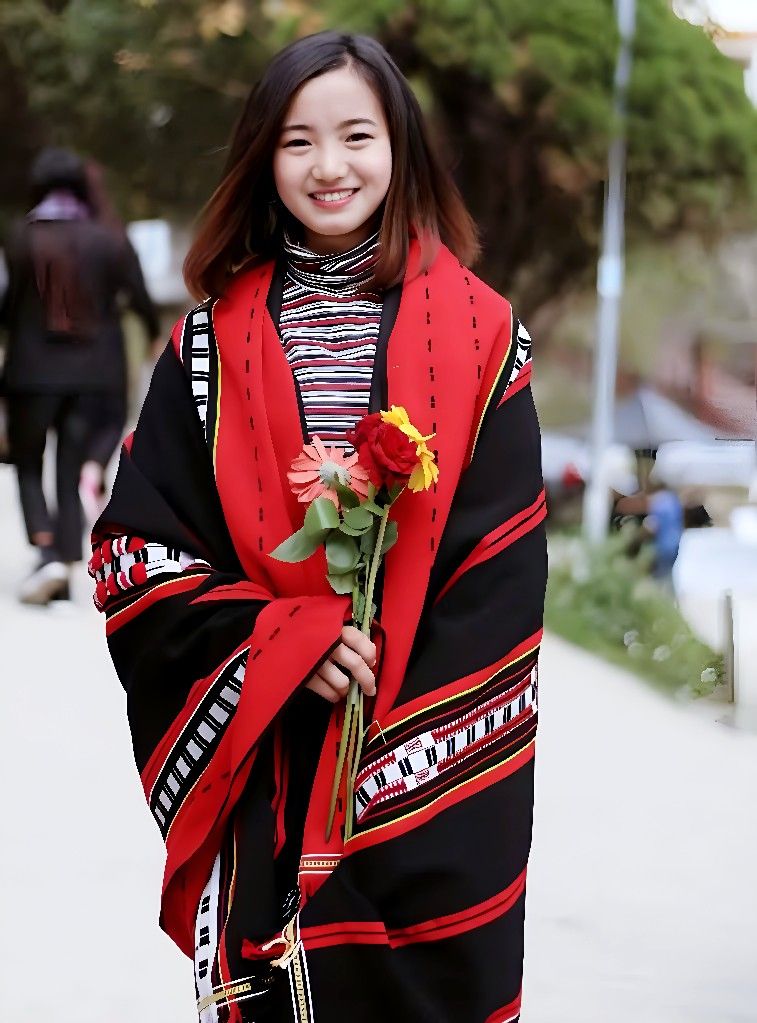In the textile history of India, the warrior shawls of Nagaland have a special place. We have 16 major tribes in Nagaland and the warrior shawls of each differ a lot. In this post, we will discuss the 9 Naga Shawls we love.
In the past, it was reasonable to recognize a tribe by simply looking at the shawl of the wearer and periodically even think the group of villages he came from, his social status, and the number of ritual feasts he had performed.
One of the common characteristics of a Naga shawl is that three pieces are woven individually and stitched together. The central line is more decorated than the other two, which normally have more or less the same pattern. The Naga designs differ from a formal structure of lines to detailed patterns of diamonds and capsule shapes. Simple straight lines, stripes, squares, and bands, varying in width color, and arrangement are the most traditional design and motifs. Each tribe has its distinct patterns.

Kinds of Naga shawls
Tsungkotepsu:
This is an exclusive male shawl and the most characteristic dress of the Ao tribe. Exclusively for men, this shawl may be worn only by someone who has taken heads in war.
Angami:
This is a black shawl with thick bold embroidered animal motifs. Worn by warriors of the Angami tribe, the shawl carries an entire range of wild animals against a black background divided into horizontal panels by woven bands of color.
Supong:
It is a typical Naga shawl worn by the Sangtam tribe. This is supposed to be used by rich people. The shawl on a black base has four grey bands at the top and another four bands of the same color at the bottom.
Rongkhim:
It is one of the most attractive shawls worn by Yimchunger Naga tribe. The shawl is red and black with narrow grey bands at the two edges. This shawl is mainly worn by warriors of great renown.
Tsungrem Khim:
It is exclusively meant for women and very popular.
Lotha:
This is a typical Naga shawl worn by the Lotha tribe. The shawl has several patterns that indicate the number of social feasts given by the wearer.
Khekaisa:
This is a shawl to be worn by only the elected public leaders or the elected public representatives wear.
Loukaisa
The special shawl for ladies is known as Loukaisa. Naga women are excellent weavers and the colourful shawls, woven by them are extremely popular. A number of traditions and beliefs are also associated with the weaving and wearing of the traditional dress.
A chang cloth requires all the zig-zag lines to fall uniformly, or else the young warrior wearing it may die a premature death.
shatni
When a Konyak woman gets married she wears a Shatni shawl which is preserved and later used only to wrap her dead body.
Present-day Naga Shawls
A surplus of new patterns and motifs has been introduced too, to reflect the younger generation’s modern choices. A women’s co-operative weaving society based in Kohima village set the trend with its progressive designs about a decade ago.
There is such a great demand from tourists for the Naga shawls that the Indian Chamber of Commerce has filed an application seeking registration of traditional Naga designs with the Geographical Indications Registration System in India. We are hopeful that the shawl will survive in the contemporary world.
Photo credit Pinterest
By Purva Buch
Recommended1 recommendationsPublished in apparel, Our Fashion Passion


